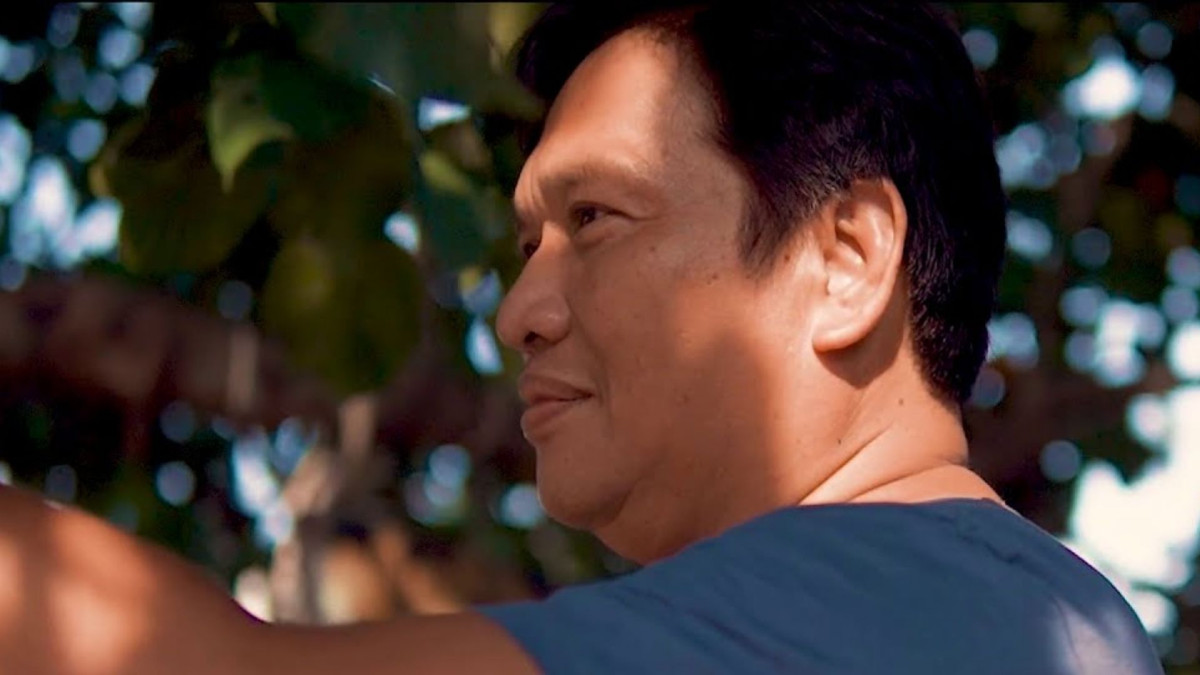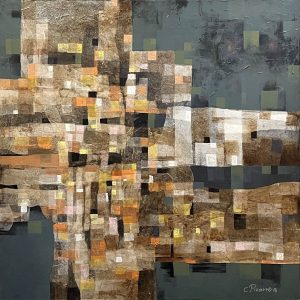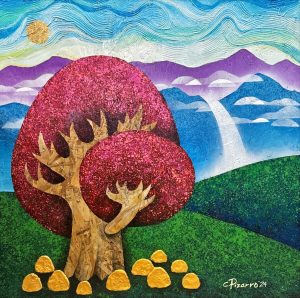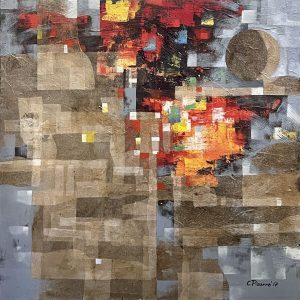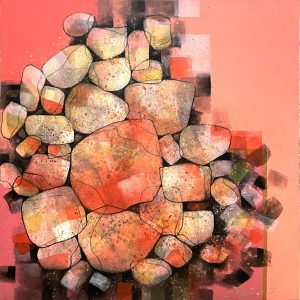As dated as mankind is the impulse to paint nature.
Chris Pizarro’s artworks aren’t painted on canvas but on something known locally as kusot, which is made entirely of wood shavings bound together by a resin, to form a material that is reusable for furniture and construction materials.
The artist’s trees look more like caricatures of man. The leaves are shaped like an Afro hairdo from the hippie generation of the 70’s. The branches are bulky, exaggerated arms that stretch upwards like a person grabbing his hair in disgust or confusion.
Most noticeable or disturbing to some who don’t immediately see the playfulness is the black and white circle at the trunk of every tree. It looks like the Cyclops, the giants of Greek mythology known to have great strength and craftsmanship. It was the Cyclops’ who forged Zeus’ lightning bolt and Poseidon’s trident. And they ate humans too. Perhaps the artist’s warning that the trees are watching us.
The trees’ poses are awkward. Steady, still, immovable, stubborn, ungiving and deeply rooted in earth. Their forms stimulate a search for its meaning.
With clear intention, the color palette isn’t sunshiny. The lighting is subdued and cloudy like the threat of a storm. We stand in front of the paintings waiting for something to happen.
Overall, the meaning of a painting of trees can vary based on the artist’s intention, the style of the artwork, and the viewer’s own personal reflection.
We are made to subtly understand that nature, deforestation and climate change is the whole vision behind these playful, cartoon-like trees. The paintings are credited to tough old mother earth herself. And the artist casts a watchful eye on the feebles of man’s relationship with nature.
